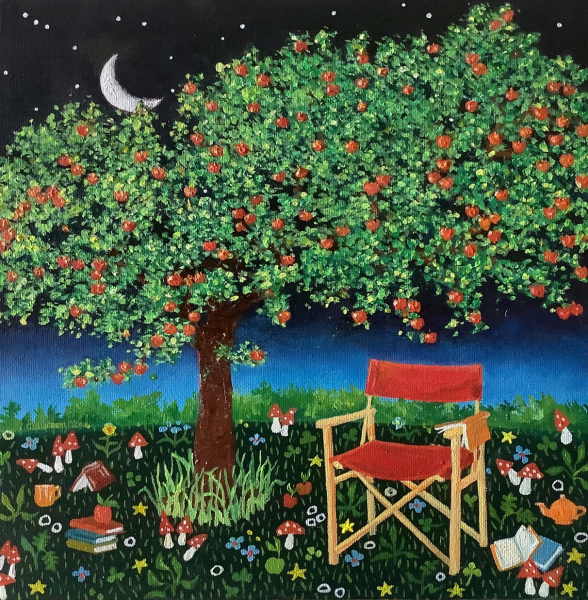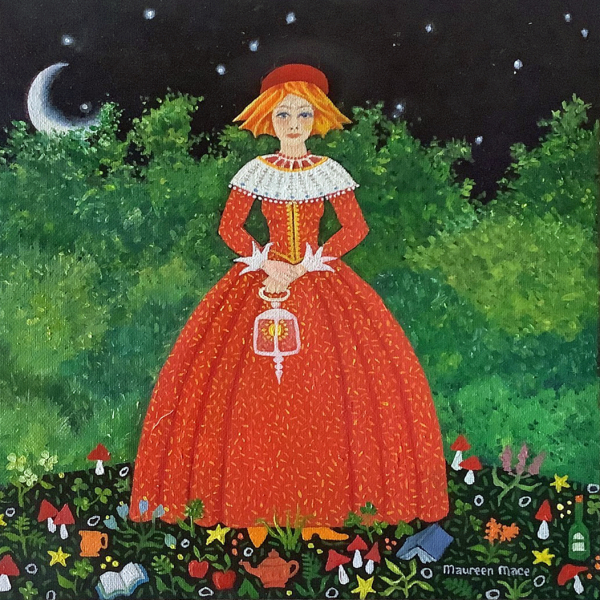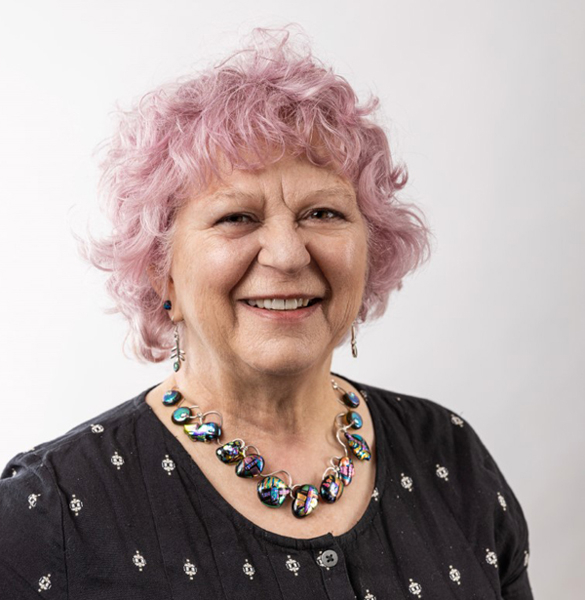
2 of my paintings for the Byard Christmas Cracker exhibition
Exhibition open 15 November to 25 December


I am delighted to be back at Byard Art Gallery for their Christmas Exhibition. I love this time of year and to see the shops full of sparkle.
I will have 4 artworks on their 'small wall'. Byard have a selection of smaller paintings at reasonable prices for that 'what can I buy' present. These two paintings are 20 x 20cms plus the frame and they are perfect for a small corner.
These paintings are in oil painted with tiny, tiny brushes to get all that detail. The first is of Newton's Apple tree and somebody seems to have been reading underneath the tree. Was it 'Philosophiæ Naturalis Principia Mathematica'?
The other painting is of a lady in an enclosed garden full of flowers. Is it Galadriel or the Lady of the Lamp?
Maureen

Painter living in Cambridge. Mixes fantasy and realism and loves medieval art and it's detail. An avid sketcher.
Copyright ©2025 Maureen Mace, all rights reserved. Website by Slawko

